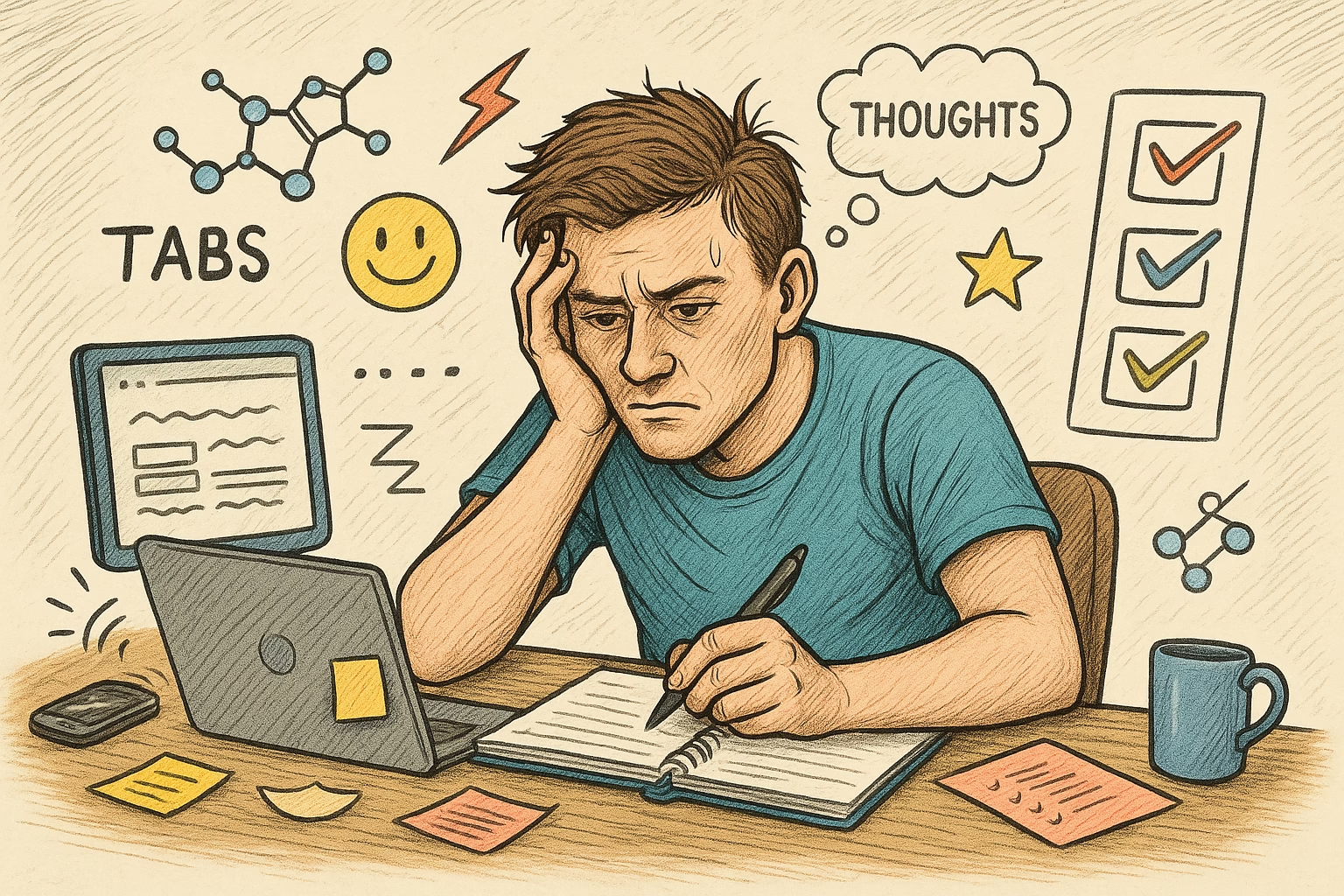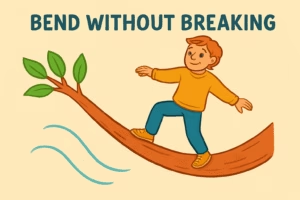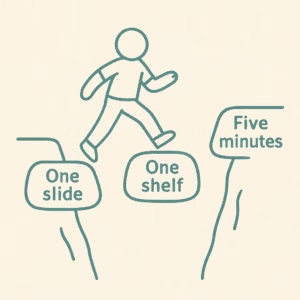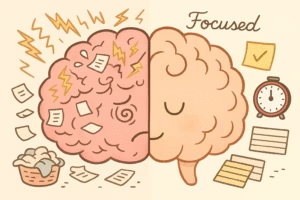Introduction
Let’s be honest—staying focused is hard. And if you have ADHD or executive function challenges, it can feel nearly impossible when the task is boring, the pressure is high, or the environment is full of distractions. You might set out with good intentions, only to find yourself scrolling, snacking, or stress-cleaning your fridge. This isn’t about laziness—it’s about how your brain regulates attention.
This article explores what attention stamina really means, why some tasks seem harder than others, and how to work with your brain (not against it) to stay engaged, even when it’s tough.
Why Distraction Happens: A Brain-Based View
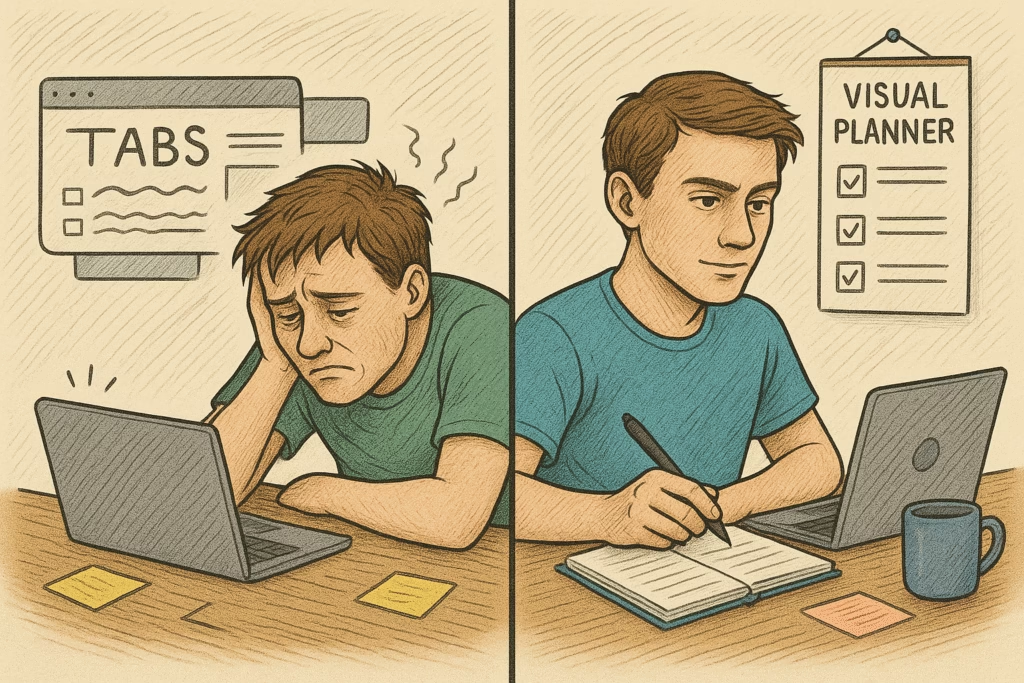
For neurodivergent individuals, distraction isn’t just about lack of discipline—it’s rooted in how the brain handles stimulation and reward. ADHD brains often crave novelty and have a lower threshold for boredom. When something feels too routine, irrelevant, or difficult, the brain may quite literally “tune out.”
Key contributors to distraction include:
- Low dopamine levels, which impact motivation and reward
- Executive function challenges (especially sustained attention and task initiation)
- Sensory overload or environmental chaos
- Emotional stress and anxiety about performance
Understanding this reduces shame and helps you shift focus to strategy instead of self-blame.
Strategies to Stay on Task
1. Break It Down (And Then Down Again)
Chunking a task into smaller, more defined steps helps your brain get clear on what to do next. Write each step like a checklist, even if it feels absurdly granular.
2. Use Body Doubling or Virtual Accountability
Having someone nearby—or even just on a video call—can cue your brain into task mode. It’s a shared focus without judgment.
3. Gamify Boring Tasks
Use a timer, points system, or post-task rewards to mimic the dopamine hit your brain craves. Consider apps like Habitica or a good old-fashioned sticker chart.
4. Change the Sensory Inputs
Try noise-cancelling headphones, an upbeat playlist, or a “focus scent” like peppermint. Even moving locations can reset your brain’s attention filter.
5. Plan for Breaks Before You Hit a Wall
Use the Pomodoro technique (25 min work, 5 min break) or your own rhythm. Knowing a break is coming can make focus feel safer and more sustainable.
When Everything Feels Overwhelming

Overwhelm triggers a mental shutdown—your brain hits pause, not out of disinterest, but self-protection. If you’re feeling paralyzed:
- Zoom Out: Identify the one smallest action you could take right now.
- Name the Feeling: “I feel overwhelmed because I don’t know where to start” is a good start.
- Anchor Yourself: Try a grounding exercise like the 5-4-3-2-1 method to bring yourself back into the present.
- Use Visuals: A flowchart, kanban board, or visual checklist can do what words sometimes can’t—organize chaos.
Real Talk: You’re Not Alone
Distraction is part of the deal with ADHD, but so is creativity, adaptability, and problem-solving. Learning to manage attention isn’t about becoming a productivity machine—it’s about aligning your environment and mindset with how you work best.

